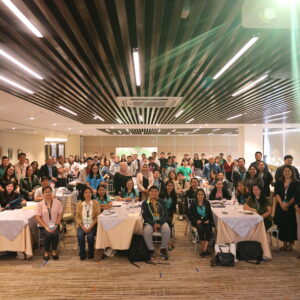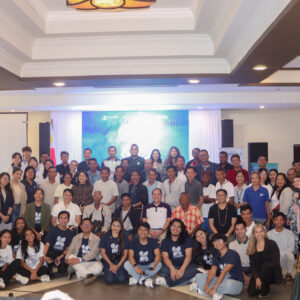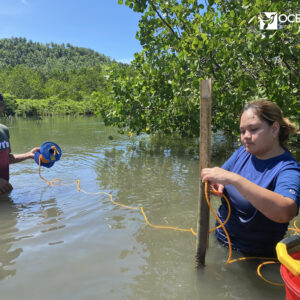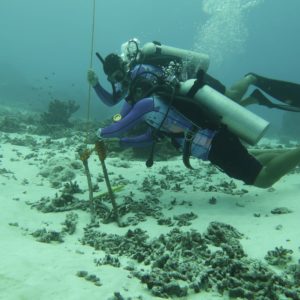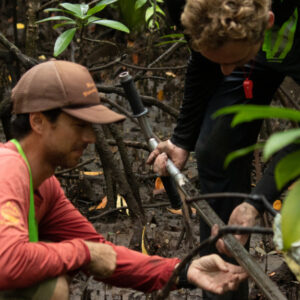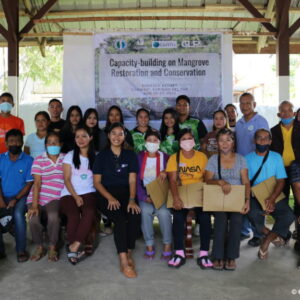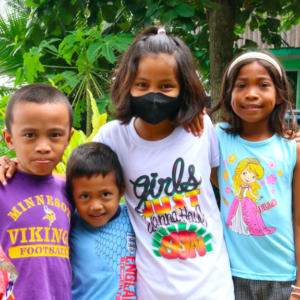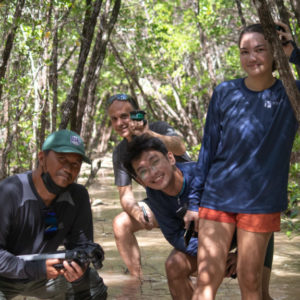From August 19-23, 2024, the Department of Environment and Natural Resources-Biodiversity Management Bureau (DENR-BMB) hosted a week of productive training workshop on Science-Based Mangrove Rehabilitation Methods in Iloilo City. This event was held alongside the Policy Roll-Out of Department Memorandum Order No. 2024-01, which focuses on the Immediate Assessment of Abandoned, Undeveloped (Unused), and Underutilized...
Tag: climateaction
Ocean Summit 2024
Oceanus Conservation recently hosted the Ocean Summit on June 7th during World Ocean’s Day, held at Coron Westown Resort, Coron, Palawan. This year’s theme, “Collaboration in Conservation: Catalyzing Action for our Ocean and Climate”, brought together an impressive assembly of about 80 participants from various sectors! A Collective Effort The summit was organized in collaboration...
Biodiversity assessment in Surigao del Sur
We conducted a biodiversity assessment at the mangrove restoration sites in Poblacion and Bitaugan West, Cagwait, Surigao del Sur. This evaluation aimed to gather baseline data on various environmental factors to gauge the success of the ongoing restoration projects. Oceanus collected data on water quality, soil samples, mangrove biodiversity, and macroinvertebrate biodiversity, ensuring a comprehensive...
Restoring abandoned fishponds in Cagwait, Surigao del Sur
Mangroves are a salt-tolerant plant that occurs within the coastal belt. They are among the most productive ecosystems on earth. It is known for its numerous ecosystem services critical to environmental health and human well-being. Mangroves have great potential to lessen the adverse effects of climate change and mitigate the harm natural coastal hazards cause to...
Real-time temperature monitoring in Tubbataha Reefs National Park
The Philippines is home to some of the most diverse and beautiful coral reefs in the world. One of the most stunning examples of these reefs can be found in the Tubbataha Reef, a UNESCO World Heritage site located in the Sulu Sea. The Tubbataha Reef is an incredibly diverse ecosystem, home to over 600...
Meet these 16 women restoring the Earth
On International Women’s Day, the Global Landscapes Forum announces its fourth annual list of climate leaders from around the world Our very own Co-founder, Frances Camille Rivera, has been recognize as one of the 16 women restoring the Earth! Check out the blog below: BONN, Germany (8 March 2023) – As humanity lurches from one...
Blue Carbon Ecosystems:Climatological and Socio-economic Impacts of Mangrove Restoration in Cagwait, Surigao del Sur, Philippines
Mangroves for climate mitigation Mangroves are part of the blue carbon ecosystems (BCE). These are highly productive coastal ecosystems that can store large amounts of carbon in the atmosphere. In this case, mangroves store and sequester substantial amounts of carbon in their aboveground biomass (bark, leaves, branches) and belowground biomass (soil sediment) accumulated. Certainly, mangrove blue carbon ecosystems...
Capacity-Building Training on Mangrove Rehabilitation, Restoration, and Conservation in Cagwait, Surigao del Sur
Mangroves in the Philippines We have the common knowledge that whenever we encounter a plant or tree species, we always end up with one conclusion. They absorb carbon dioxide and give off oxygen. Conversely, they are called autotrophs. They are organisms that can make their food. And in the process, they support humans and other living things...
Blue Carbon Project: A one-day training on the Propagation of Sonneratia alba seedlings for the community in Salay, Misamis Oriental
Our Mission As part of our blue carbon project, Oceanus Conservation aims to contribute to the conservation, education, and overall community development of Filipinos. We are organizing training for our partner communities to provide ecosystem services. This would pertain to food security in the years to come and create a sustainable and lasting impact. Knowledge...
Philippine mangroves conservation through tech: Mangrove.World
Why are we losing mangroves? The mangrove ecosystem is one of the most valuable ecosystems on earth. They help mitigate climate change with their capacity to store carbon in the atmosphere. However, the state of the world’s mangroves is declining by 0.2 to 0.7% every year. In relation to that, Super Typhoon Rai (Odette) greatly...


